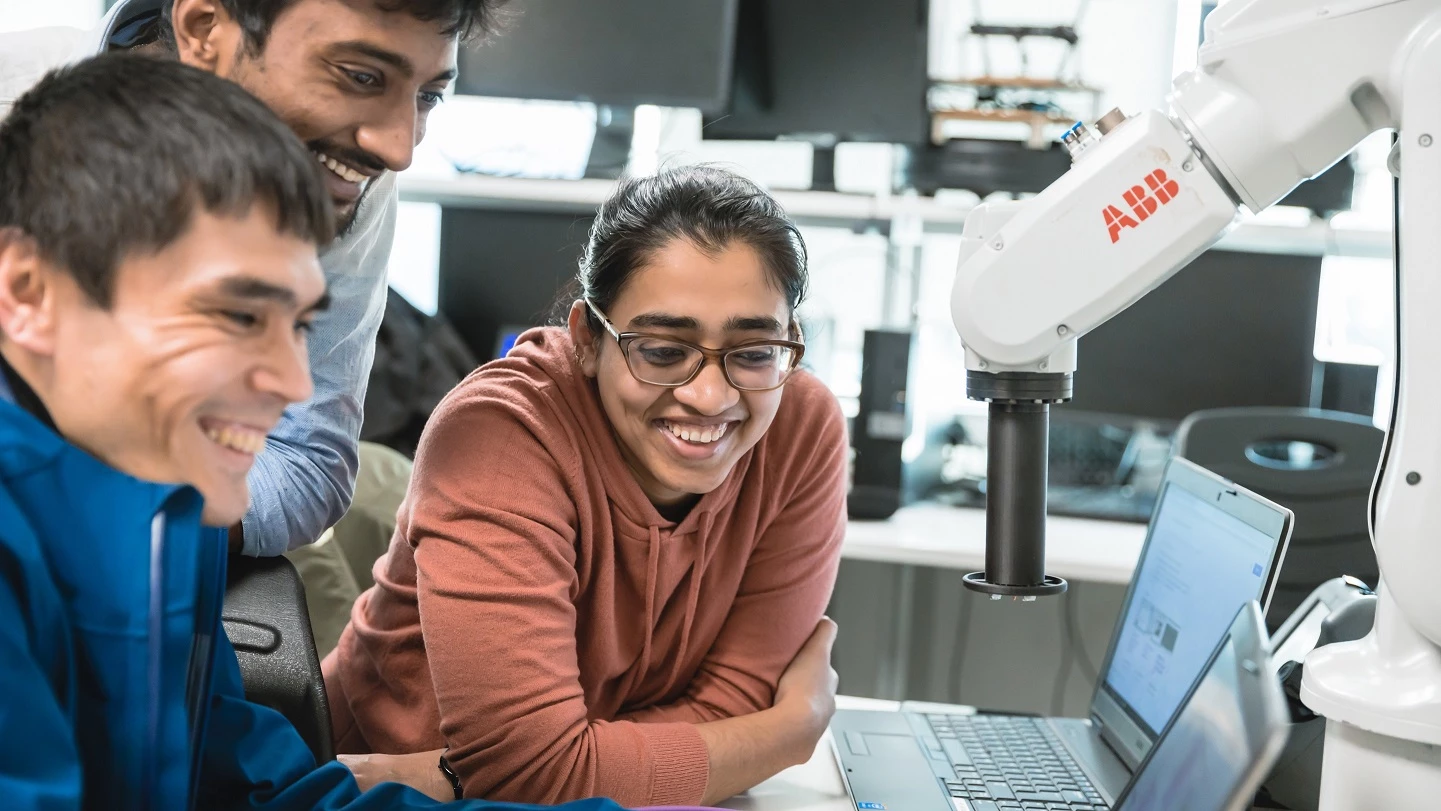
Partner Article
Siemens digital tools come to rescue of Middlesex University students during lockdown
Siemens technology helped postgraduate MSc Mechatronic Systems Engineering students to complete a vital academic project after Covid-19 closed the campus and stopped them accessing any physical equipment in their labs.
A challenge common to many in industry because of the pandemic, the students’ only option was to design, develop, and test a solution in the virtual world before deploying and commissioning it remotely. In this case to go from physical to virtual commissioning of their assessment task “prototype a conveyor belt system that acts as a segue between a robot arm and a Festo CP Factory”.
To prepare students for a future where digital and advanced manufacturing technologies were combined, Siemens introduced its innovative Connected Curriculum initiative in 2019 in partnership with Festo, a global leader in automation and technical training. Connected Curriculum bundles Industrial hardware and software with simulation environments, data, curriculum examples, case studies, and real-life problem-solving tutorials. The Initative was created because the rapid pace of technology development means the only way academia can keep-up is by partnering more closely with industry.
Steve Jones, the lead for Connected Curriculum program at Siemens, commented: “It was a challenging assignment, but one that these students will actually face in industry. In Siemens we see these challenges every day and Connected Curriculum is our way of helping the next generation of graduates have a head start by working on real world problems with real world tools”.
Luke Bennett, Associate Lecturer in Design Engineering at Middlesex University, said: “This is the first time we applied the remote solution. The main advantage was its phenomenal connectivity. The system allowed connectivity to different technologies and hardware and software. We can use these digital techniques again for giving access to a much wider number of students to be able to get access to a system like this, particularly using Mindsphere. We can also use this as a vehicle to train undergraduates in terms of being able to model digital twins.”
According to Bennett, the main challenge was access to hardware, a key requirement for any student. But thanks to Connected Curriculum, they could get access to hardware remotely. The students chose to use Siemens NX Mechatonrics Concept Designer with TIA Portal and PLCSim advanced to produce a ‘digital twin’ of their solution, which mirrored exactly the physical hardware in the inaccessible labs.
Professor Mehmet Karamanoglu, Head of Department of Design Engineering and Mathematics, said: “It’s been a rewarding learning curve for all parties involved. I was delighted by the results, especially since the students benefitted greatly. I imagine the prototype will be used for other ongoing projects, but no specific plans yet. We believe the bespoke layer that the prototype has given us will certainly open up new possibilities across sectors.”
The students, who were initially concerned about their ability to complete their project, were impressed by the versatility of the solution.
Chung Hing Woo, a 43-year-old Malaysian student of the Mechatronics course, said: “It was amazing that we got to be familiar with hardware and software using solutions from Siemens and Festo. We could build our confidence in handling mechatronics-related prototyping and system integration involving different systems packages.”
Naresh Bandlamudi from India said: “I gained a lot under the mentorship of our tutor, Luke Bennett. Our group project was a huge success. I was impressed by the Siemens NX Simulation software that made our work easy. I am sure that the knowledge I have gained will empower me to achieve great heights in my career.”
Shumaila Ansari from India who aims to be a design engineer in automobile and aircraft industries, said: “The project we completed with the help of Siemens and Festo solutions is a remarkable achievement, especially during Covid-19 restrictions. The Siemens solution made concept designing and product designing simpler.”
Connected Curriculum is a solution that is available to all universities and is part of a package of support from Siemens to help bring industrial insight and experience to all learners.
This was posted in Bdaily's Members' News section by stuart greer .
Enjoy the read? Get Bdaily delivered.
Sign up to receive our popular morning London email for free.








 Zero per cent - but maximum brand exposure
Zero per cent - but maximum brand exposure
 We don’t talk about money stress enough
We don’t talk about money stress enough
 A year of resilience, growth and collaboration
A year of resilience, growth and collaboration
 Apprenticeships: Lower standards risk safety
Apprenticeships: Lower standards risk safety
 Keeping it reel: Creating video in an authenticity era
Keeping it reel: Creating video in an authenticity era
 Budget: Creating a more vibrant market economy
Budget: Creating a more vibrant market economy
 Celebrating excellence and community support
Celebrating excellence and community support
 The value of nurturing homegrown innovation
The value of nurturing homegrown innovation
 A dynamic, fair and innovative economy
A dynamic, fair and innovative economy
 Navigating the property investment market
Navigating the property investment market
 Have stock markets peaked? Tune out the noise
Have stock markets peaked? Tune out the noise
 Will the Employment Rights Bill cost too much?
Will the Employment Rights Bill cost too much?